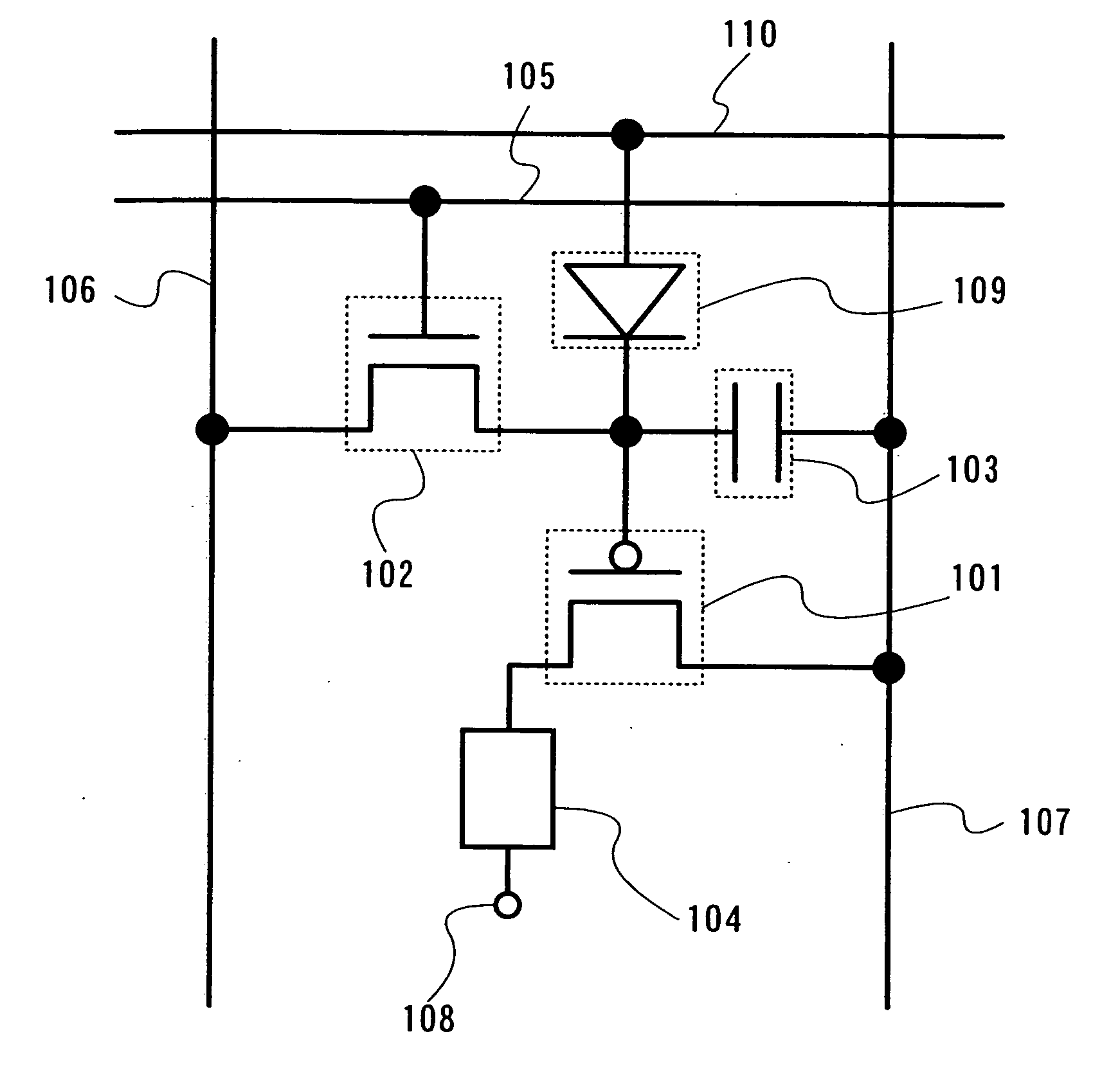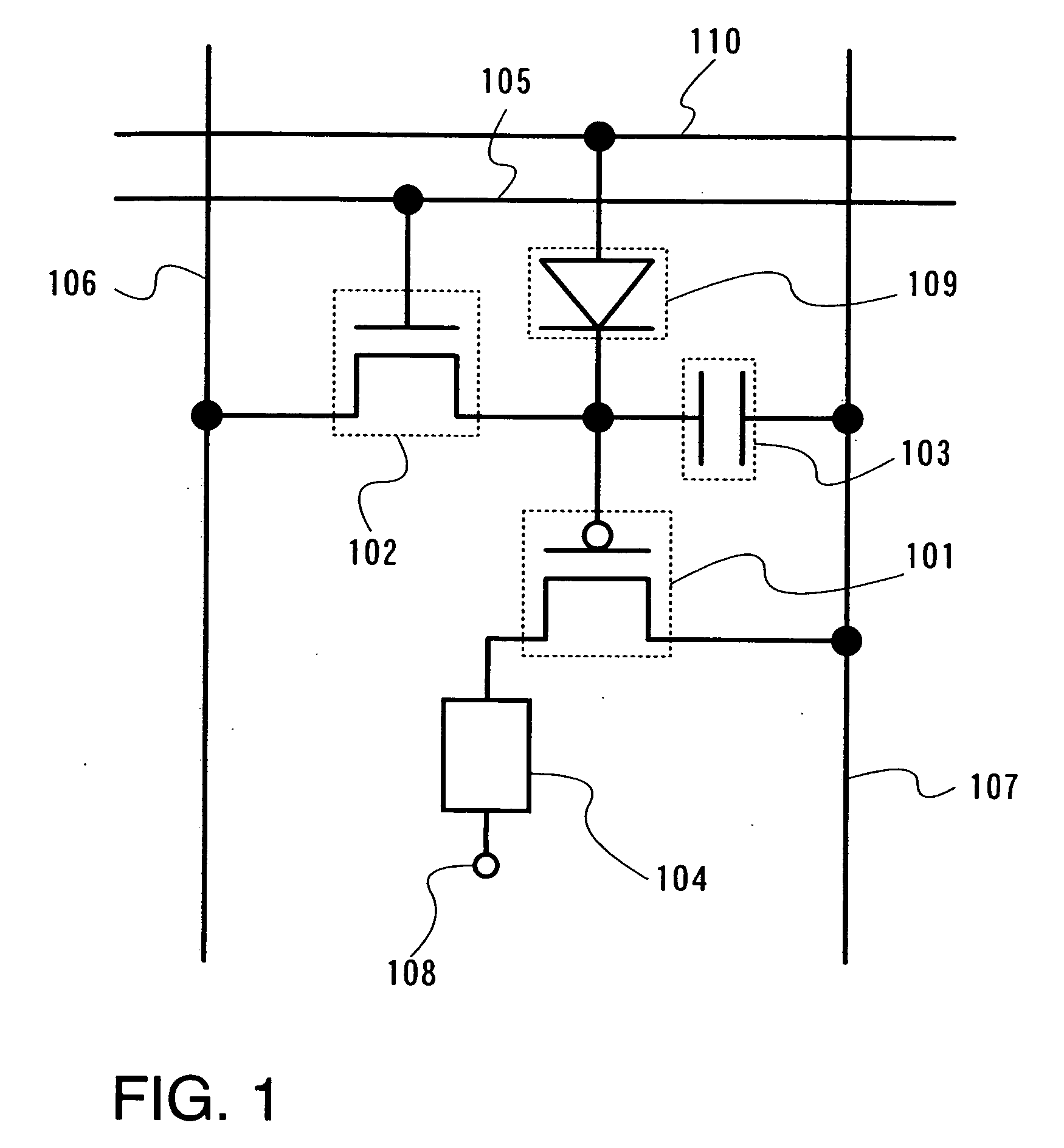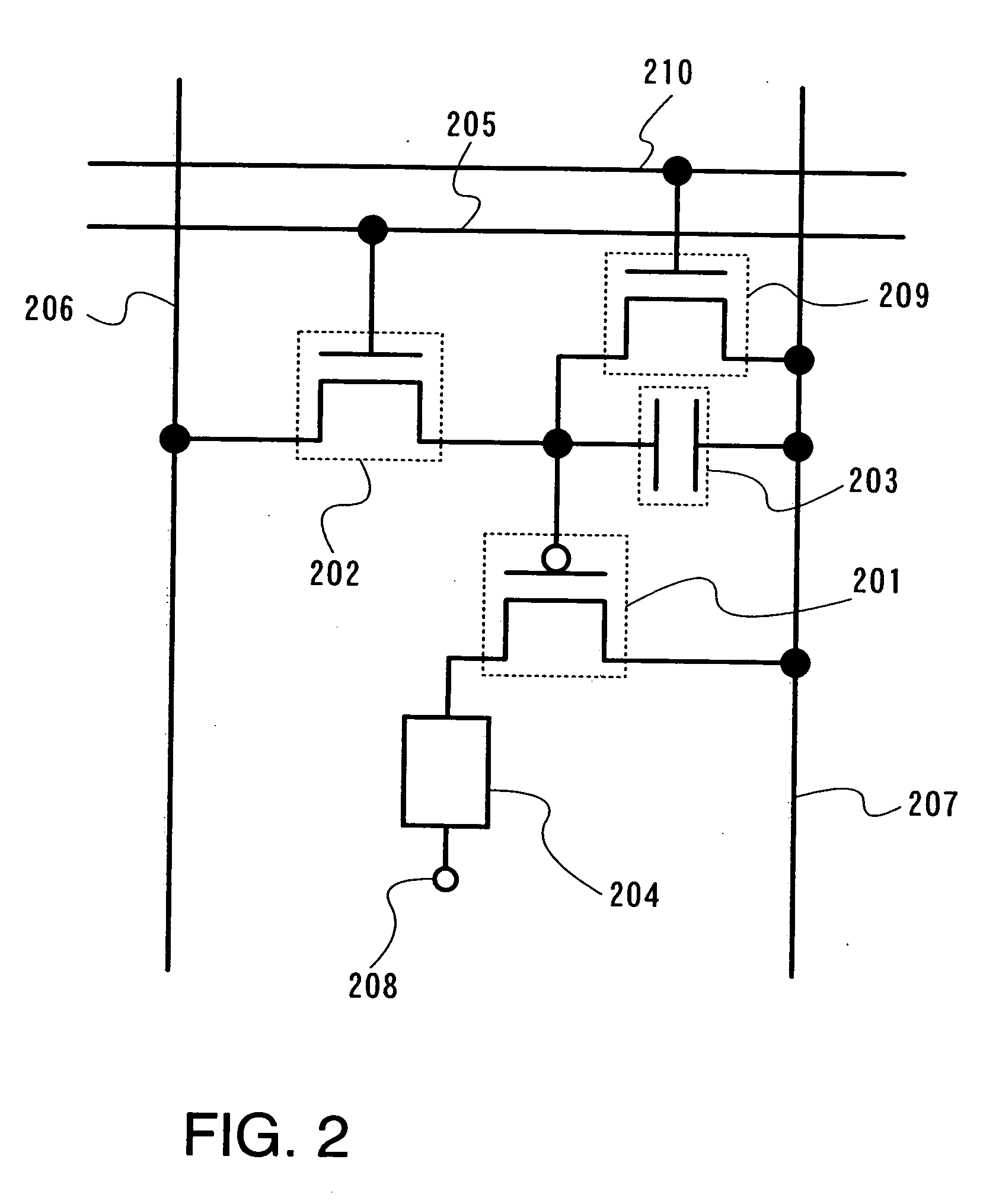Semiconductor device and display device
a display device and semiconductor technology, applied in static indicating devices, instruments, electroluminescent light sources, etc., can solve the problem of inaccurate display, reduce the current flowing to a rectifying element or a transistor, suppress an increase in manufacturing costs, and improve yield
- Summary
- Abstract
- Description
- Claims
- Application Information
AI Technical Summary
Benefits of technology
Problems solved by technology
Method used
Image
Examples
embodiment mode 1
[0136] In this embodiment mode, description is made on a pixel configuration in the case of applying a rectifying element as a potential transfer unit and to a display device having the pixel.
[0137] First, description is made with reference to FIG. 1 on a basic pixel configuration of this embodiment mode. Here, only one pixel is shown, but a plurality of pixels are arranged in matrix of the row direction and the column direction in a pixel portion of a display device.
[0138] The pixel shown in FIG. 1 includes a driving transistor 101, a switching transistor 102, a capacitor 103, a light emitting element 104, a first scan line 105, a signal line 106, a power source line 107, a rectifying element 109, and a second scan line 110. It is to be noted that the driving transistor 101 is a P-channel transistor and the switching transistor 102 is an N-channel transistor. The switching transistor 102 has a gate terminal connected to the first scan line 105, a first terminal (source terminal o...
embodiment mode 2
[0208] In this embodiment mode, description is made on a configuration where a circuit element having three terminals is used as a potential transfer unit.
[0209] First, description is made with reference to FIG. 53 on a basic pixel configuration of this embodiment mode. In the pixel, a transistor 5301, a switch 5302, a potential holding element 5303, a light emitting element 5304, a first scan line 5305, a signal line 5306, a power source line 5307, a second scan line 5310, and a potential transfer element 5309 are provided. The switch 5302 is connected to control the conduction or no conduction between the signal line 5306 and a gate terminal of the transistor 5301. Further, a control terminal of the switch 5302 is connected to the first scan line 5305. Accordingly, the switch 5302 is turned on / off depending on a signal inputted to the first scan line 5305, thereby controlling the conduction or no conduction between the signal line 5306 and the gate terminal of the transistor 5301...
embodiment mode 3
[0293] In this embodiment mode, a pixel configuration is shown which can further prevent that a light emitting element slightly emits light when the pixel is required to emit no light (black display). That is, when an off current flows through a driving transistor, the current is prevented from flowing to a light emitting element.
[0294] In a pixel shown in FIG. 56, a driving transistor 5601, a complementary transistor 5611, a switching transistor 5602, a light emitting element 5604, a rectifying element 5609, a first scan line 5605, a signal line 5606, a power source line 5607, and a second scan line 5610 are provided. It is to be noted that the driving transistor 5601 is a P-channel transistor, and the complementary transistor 5611 and the switching transistor 5602 are N-channel transistors. A first terminal (source terminal or drain terminal) of the switching transistor 5602 is connected to the signal line 5606 and a second terminal (source terminal or drain terminal) thereof is ...
PUM
 Login to View More
Login to View More Abstract
Description
Claims
Application Information
 Login to View More
Login to View More - R&D
- Intellectual Property
- Life Sciences
- Materials
- Tech Scout
- Unparalleled Data Quality
- Higher Quality Content
- 60% Fewer Hallucinations
Browse by: Latest US Patents, China's latest patents, Technical Efficacy Thesaurus, Application Domain, Technology Topic, Popular Technical Reports.
© 2025 PatSnap. All rights reserved.Legal|Privacy policy|Modern Slavery Act Transparency Statement|Sitemap|About US| Contact US: help@patsnap.com



